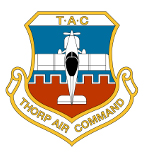leewwalton wrote:
Hey John,
You said solenoids work "fairly reliably" mounted horizontally, "fairly" does not sound good. As you are probably the most meticulous person I know, can you elaborate on that a bit. Most of the guys in the local chapter swear they have to be mounted horizontal, I even pulled one apart a few years ago and from what I saw, that plunger weighs nothing, the spring seems more than capable of putting enough pressure on the plunger to keep it from laying down and binding. But again, I will bow to your expertise on this ... As I said anyone who knows you or has seen your work knows ... John doesn't half azz anything!
Here's my experience, Lee (and thank you for the very kind words)... a local friend, brand new solenoid mounted horizontally, and it would not make contact after the first few hours. We cut it apart and nothing obvious was found. It looked good, but when energized in the horizontal position it wouldn't work. The armature that slides back & forth in the coil is a fairly loose fit. The possibility of poor/incomplete contact exists in the horizontal position. That & other issues combine to make the unit less reliable in the horizontal position. I've seen this problem personally twice now, and heard of it several other times over the years.
I had this very same conversation with a guy on another forum. He originally didn't think it was a solenoid problem because the unit was brand new. I stated that it probably was the solenoid horizontal mounting position, & I posted the link to the White Rogers site, which I will try again here... it didn't seem to work on my first posting about this. It is an active site:
http://www.emersonclimate.com/Documents ... 003web.pdfYou might find his reply interesting. He explains what he found and his analysis very clearly. He had 3 pictures along with it, but I can't seem to transfer them to this forum:
Today I disassembled the offending relay to see what exactly was going on inside.
Photo 1 shows the internal parts to be in like new condition with regard to wear and tear. It was pretty clear what was not a problem. No dirt, no foreign material, no corrosion, no wear, no galling, no pitting, no burned contacts.
Inspection and measurements of the moving parts turned up the following points: 1) The radial play (side to side) of the core was 0.140" according to my dial gauge 2)There is a certain amount of slop between the copper contactor washer and the core/pin it is mounted on to pull it down. 3)The pull is limited by an anvil at the bottom so the difference between what the pull needs to be and what the limit is, is very little - when it hits the bottom - it doesn't pull down any further - period.
Photo 2 shows what happens if the core is manually pushed down to the limit and to the one side - meter shows no contact. (note the core moves further to the edge in this photo compared to photo 3)
Photo 3 shows what happens if the core is manually pushed down to the limit and to the other side - again - the meter shows no contact. (note the core does not move as close to the edge of the case in this photo but still no contact)
Photo 4 shows what happens when the core is manually pushed straight down to the center - here we have contact as shown by the meter.
So what do I make of this?
1) There is considerable slop in the mechanism.
2) There are very close tolerances on the pull length - I don't know how much this varies from unit to unit. Pull may be adversely affected by cocking due to mounting position, enough to prevent contact.
3) There are certainly manufacturing variations from unit to unit - you cannot make more than one of anything and avoid manufacturing variations from design specifications (tolerances).
4) Given the slop, pull length and manufacturing variations, it is entirely possible for a single unit to mess up even though there is no wear present. Depending on how the alignment of circumstances plays out on a single unit - one or most may work forever in any position you mount it in and another may fail.
5) I am speculating the manufacturer knows all of this and that is why they make the recommendation to mount the unit vertically - to improve the reliability rate.
For my part - hereinafter - all of my relays/solenoids get mounted with the plunger oriented vertically. While some or most units may work forever in other positions - it is evident that I ended up with one that was affected adversely by gravity due to the confluence of circumstances/tolerances particular to that unit.






